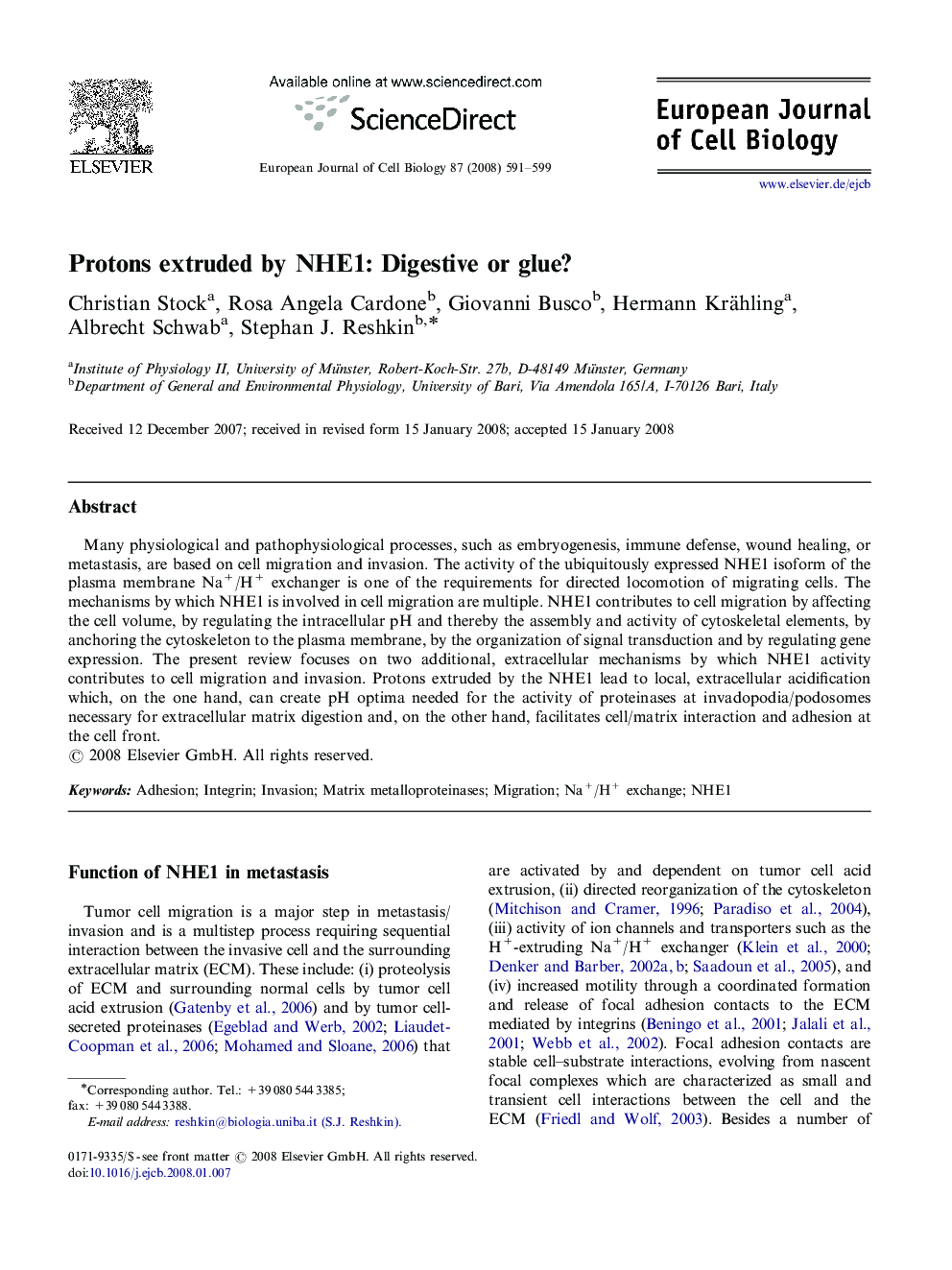| Article ID | Journal | Published Year | Pages | File Type |
|---|---|---|---|---|
| 2179135 | European Journal of Cell Biology | 2008 | 9 Pages |
Many physiological and pathophysiological processes, such as embryogenesis, immune defense, wound healing, or metastasis, are based on cell migration and invasion. The activity of the ubiquitously expressed NHE1 isoform of the plasma membrane Na+/H+ exchanger is one of the requirements for directed locomotion of migrating cells. The mechanisms by which NHE1 is involved in cell migration are multiple. NHE1 contributes to cell migration by affecting the cell volume, by regulating the intracellular pH and thereby the assembly and activity of cytoskeletal elements, by anchoring the cytoskeleton to the plasma membrane, by the organization of signal transduction and by regulating gene expression. The present review focuses on two additional, extracellular mechanisms by which NHE1 activity contributes to cell migration and invasion. Protons extruded by the NHE1 lead to local, extracellular acidification which, on the one hand, can create pH optima needed for the activity of proteinases at invadopodia/podosomes necessary for extracellular matrix digestion and, on the other hand, facilitates cell/matrix interaction and adhesion at the cell front.
